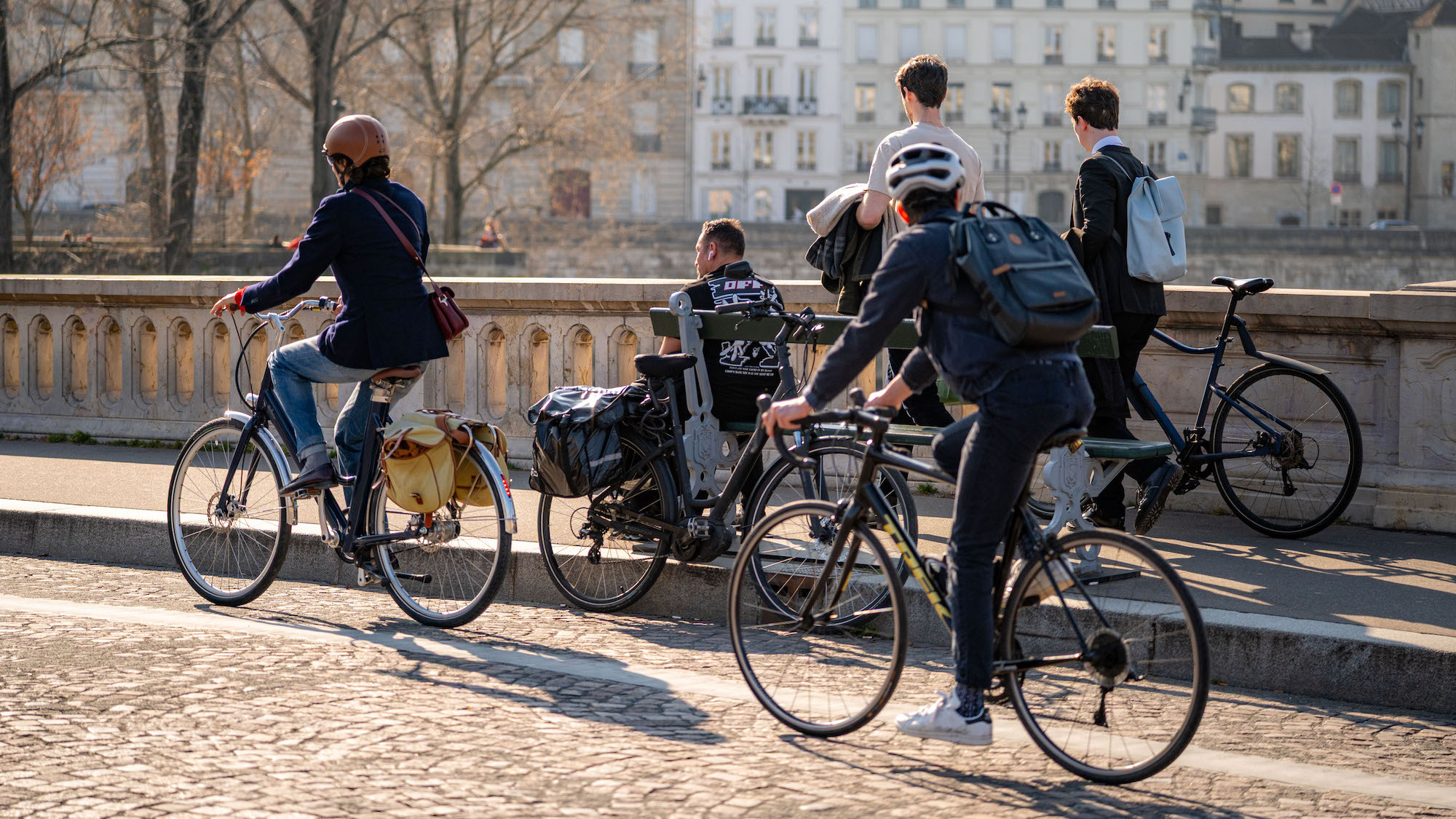In last October, a young cyclist aged 27, Paul Varry, lost his life after being hit by a car. This tragedy occurred while the place of bikes in the city was already at the heart of discussions for several months, leading to a call for a comprehensive report from the transport minister at the time, François Durovray. The results of the study have just been delivered to his successor, Philippe Tabarot. And here are the new proposed measures to ensure everyone's safety on the roads.
A booming trend
For the past few years, unless you've been living in a cave, it’s impossible to have missed the remarkable rise of cycling in the streets of the capital. You have to say that between the establishment of numerous bike lanes, the à l’achat, or even the increase in the availability of bike-sharing options, all the conditions are set to make biking the ideal mode of transport in the capital.
Suite à la mort tragique de Paul Varry, un rapport gouvernemental vient de dévoiler 40 mesures chocs pour mieux protéger les cyclistes, piétons et usagers vulnérables.
— Cleanrider (@cleanrider) May 2, 2025
L'article complet : https://t.co/U5Zzi3yXyB
En 2024, 222 cyclistes ont perdu la vie sur les routes françaises.… pic.twitter.com/RtP2tDFISg
So much so that it has become a must. In 2024, a study by the Paris Region Institute highlighted the dominance of bicycles, with 11% of users, compared to only 4% for cars. The Boulevard de Strasbourg, for example, recorded 2.4 million bikes alone over the past year. The same goes for the velibs, whose subscriptions have increased by 12.6% in 2024.
A report more necessary than ever
However, as a natural progression, with the increase in users came the rise in accidents, the most notable of which is undoubtedly the extremely violent death of Paul Varry.
last October. A tragedy caused by the lack of tolerance from some users, and especially by the lack of consideration for the various dangers present on the paths.La #violencemotorisee encore et tjs
— Mobi BoulBi MDB 🚲 (@MDB_BB) October 23, 2024
Ce conducteur roule plus de 300m sur une bande cyclable avec son tel 🤳 au volant ⚠️
On lui parle poliment
On lui propose de se garer
Il continue 🚫
Il insulte 🤬
Il en vient aux mains
Il ne sera jamais condamné
Il recommencera#JeSuisPaul
😓 pic.twitter.com/1mE4EMBU3j
To address this situation, a team has been formed to prepare a report. After hundreds of hours of consultation, here are the various measures that have been discussed. First, there's a need to strengthen the enforcement. This applies to both drivers (with video surveillance) and cyclists. Next, the idea of implementing a unique color code throughout the city has been raised, to highlight the infrastructure reserved for cyclists. Lastly, there have also been suggestions for organizing bike courses for “new cyclists,” along with the integration of more questions and greater awareness campaigns.Support for bicycles during the transition of the Highway Code and the license. Or even more frequent contextual placements, like in the car ads, where cyclists are nonexistent and drivers are presented as the kings of the road.
A long road ahead
However, while we can only applaud the efforts made by the team to set up this report, we regret that some included measures are a bit too lenient and aren't likely to bring about significant change. One of the most striking examples: the name change of the Highway Code to « Public Road Code ». Not sure this really helps to move the debate forward, but why not…
Retrouvez notre Dossier de Presse sur les #UsagersVulnérables à @ClermontFd
— Ligue Contre la Violence Routière 63 (@lcvr63) May 13, 2025
Quelques jours après la remise du rapport sur les violences routières à @PhilippeTabarot , @lcvr63 a voulu mettre en évidence la vulnérabilité des piétons, cyclistes sur l’espace public.
Il faut agir pic.twitter.com/ys8bRvJjQt
The bicycle associations of the capital, interviewed by Parisien following the publication of the report, have indeed expressed some reservations about it. Marion Soulet, spokesperson for the Paris en Selle association, for instance, regrets the lack of direct penalties in cases of observed road violence, as is already the case for serious speeding violations or instances of driving under the influence. Alexis Frémeaux, president of Mieux se déplacer à bicyclette (MDB), takes it even further, stating outright that "the report completely misses its point". Conclusion: it .There’s room for improvement, but it’s not quite there yet.



